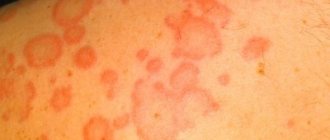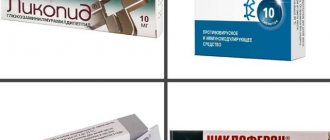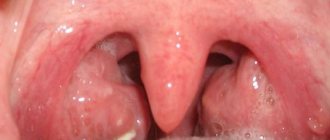Due to the fact that nasal swelling occurs for various reasons, the best folk remedy for a runny nose in one case may be completely useless in another.
For example, warming up the nose, indicated for hypothermia, is not only useless, but harmful in case of a bacterial infection.
Therefore, when considering the most effective folk remedies for a runny nose, we will first of all indicate for which specific runny nose and for what symptoms they will work.
There is, however, a universal remedy. This…
Salt solution in water
It is used for any type of runny nose. This is the best folk remedy for bacterial runny nose, which produces thick green snot.
Any salt is suitable for preparing the solution.
Purpose of use: moisturizing the nasal mucosa, preventing snot from drying out, and washing away mucus from distant parts of the nasal passages into the throat.
Efficacy: depends on the type of runny nose. Protects against exacerbation of symptoms; with regular use, it allows you to constantly breathe through your nose.
Preparation instructions: 1 heaped teaspoon of salt is dissolved in a liter of boiled water, mixed thoroughly.
Directions for use: You should rinse your nose with saline solution, regardless of the amount of snot and its consistency. If the mucus is clear and thin, the solution will help flush it out of the nose; if it thickens, rinsing will help flush it down the throat for expectoration or swallowing.
If there is no sensation of a lump deep in the nose or throat, it is enough to instill three drops of solution into each nostril every 15-20 minutes. If the snot thickens and accumulates far in the nose, the nose needs to be rinsed. To do this, the solution is poured into a teapot with a narrow neck, a rubber bulb or a special container, and then the neck of the vessel is inserted into the nostril, the head is tilted so that the nostril being washed is on top, and the solution flows into the nose. It is helpful not to squeeze your throat so that the solution flows into your mouth.
Special vessels for rinsing the nose
Such washings should be done every 2-4 hours, depending on the rate of snot accumulation.
On a note
A salt solution is an effective folk remedy for a runny nose, regardless of what salt and what water are included in its composition. Table salt in tap water works just as well as expensive products based on water from the Adriatic Sea or Atlantic Ocean (such as Humer, Aquamaris, Aqualor) or solutions of black salt or Dead Sea salt. There is no need to spend money at all!
Video: How to make nasal rinsing a simple and familiar procedure
Best Recipes
Folk remedies have been used for decades and more than one generation has seen their effectiveness with their own eyes. If pharmaceutical antiviral drugs are the cause of constant controversy about their effectiveness, and are also addictive, then folk remedies are good because they help everyone, always (with very rare exceptions).
This is a good immune stimulant; it will increase the body's resistance to the virus. The simplest and most accessible foods rich in vitamin C are lemon and rose hips. Lemon can be put in tea or finely chopped and mixed with honey or sugar, and eat 1-2 spoons several times a day. Rosehip can be brewed as a drink and drunk warm.
For ARVI symptoms, a mixture of onions and honey helps a lot. A medium-sized onion needs to be grated (or grind in a blender until mushy). Add 3 teaspoons of honey to the onion. You can even add candied honey; it will melt when mixed with onions. The mixture is eaten on a spoon several times a day.
Heat the milk. It must be warm, but in no case hot. Add half a spoonful of butter to warm milk, dissolve and drink slowly, in small sips. If you have a cough, you can add half a teaspoon of soda to the milk and butter; it thins the mucus.
Honey is a natural anti-inflammatory and antimicrobial agent; in addition, it softens a sore throat and soothes irritated mucous membranes. You can simply eat honey with spoons, you can put it in tea instead of sugar, you can mix it as in the recipes above - with lemon, with onions, with milk.
You need to brew chamomile flowers and gargle with the decoction, add the decoction to tea or drink several sips throughout the day. Chamomile relieves inflammation well. Read about the beneficial properties of chamomile at this link.
A good natural antiviral agent. You can eat garlic with bread, or rub bread with garlic, or add garlic pulp to your food.
In a glass of warm water, dilute half a teaspoon of salt and soda. This mixture relieves inflammation and acts as an antimicrobial agent.
This recipe could be classified as a warm drink, but raspberries are a real storehouse of beneficial properties for viral infections, and tea with raspberry jam is perhaps the most effective remedy for ARVI. Raspberries work as a natural immunostimulant, relieve inflammation, warm the throat, and help reduce fever.
As soon as your nose starts to tingle and your throat gets scratchy (the first manifestations of ARVI), you need to pour a little dry mustard into your socks at night; it will warm your feet well. This recipe should not be used by children under 3 years of age.
An iodine net on the soles of the feet helps a lot with the first viral runny nose (when literally water pours out of the nose). This grid can be made even for children under one year old.
Cotton-gauze bandage
Used for allergic rhinitis.
Purpose of use: to prevent allergens from entering the nose.
Efficiency: high. As long as the bandage is on the face and its material is moistened with water, all allergens will settle in the cotton wool layer. Without contact with them, an allergic runny nose will go away within a day or two.
A cotton-gauze bandage is the most effective remedy for allergic rhinitis. If the runny nose itself is caused by the ingestion of plant pollen, poplar fluff, smoke, dust into the respiratory tract, then it is sufficient to use it only outdoors. If the allergen is located indoors (animal fur, bird feathers, house dust, lint in pillows), then a mask must be worn here as well. This is the best protection against allergens getting into your nose.
Allergy sufferers must wear a mask when plants are blooming.
Important!
For a runny nose, you need to use a thick cotton-gauze bandage. A simple medical bandage made of one layer of fabric allows small particles to pass through, including pollen from some plants, and does not give the desired effect.
The mask itself must be moistened before use, which will increase its effectiveness.
Warming up the nose
Used for colds and hypothermia.
Purpose of use: stop swelling and excessive mucus production at low temperatures.
Efficiency: very high. If there are no additional reasons for a runny nose, already during warming up the swelling will begin to subside and the nose will begin to breathe.
It is also useful to read: Folk remedies for allergic rhinitis
Directions for use: apply something warm and hot to the bridge of the nose, capable of giving off heat for a long time.
Inhalation over a steaming pan is an effective way to warm up the nose
Warming the nose is the best folk remedy for a runny nose caused by hypothermia. To carry it out use:
- Boiled eggs, just removed from boiling water;
- Salt heated in a frying pan and poured into a clean sock;
- Vietnamese Star - used to smear the wings of the nose and upper lip;
- Ultraviolet lamp;
- Inhalation over boiling water. You don’t need to add anything to it, only steam will heat it!
And the most effective way to warm up the nose is a hot bath. In addition to warming up the nose, the entire body is warmed up.
There is no point in warming up the nose if the patient is already warm.
Important!
Warming up the nose should not be done if there is a bacterial infection or thick green snot . In this case, high temperature will increase the activity of bacteria.
The same situation when steam inhalation and other methods of heating are prohibited
Review
“My grandmother taught me to treat a runny nose with salt, and after that I won’t accept anything else. I don’t even buy any chemicals at the pharmacy so as not to poison myself. If there is a sheet somewhere, I take salt, throw 4-5 tablespoons into a frying pan, heat it up and put it in a simple sock. Then I apply it to my nose. This is the best remedy - almost always a runny nose goes away the next day, and no drops are needed. But if your nose runs from allergies in the summer, this remedy does not help. It should just warm up.”
Vitaly, Vinnitsa
Effective antiviral traditional medicines
There are many antiviral vaccines and drugs that help the body fight viruses, but almost always medications have some contraindications and side effects.
Folk antiviral remedies are much more attractive in this regard.
Many herbs and foods have antiviral properties. Their action is explained by the ability to mobilize the body’s forces to fight the disease. Each of the listed antiviral folk remedies helps strengthen the immune system, and, therefore, helps the body resist viruses.
This plant increases the body's resistance to viral and fungal infections. Echinacea purpurea is used for the prevention of acute respiratory viral infections, in complex therapy at the first signs of colds and flu.
Brew 0.5 tsp of herb with 200 g of boiling water, leave for 10 minutes. Drink herbal infusion 1 glass 2 r. per day for a week.
But echinacea should not be used if you are allergic to plants of the Asteraceae family (marigolds, daisies, chamomile), with tuberculosis, atherosclerosis, or autoimmune diseases.
Rose hips, its leaves and roots have excellent healing properties. Rosehip is a good immunomodulator; it can protect the body from viruses and help recover from illnesses.
To prepare the infusion, take the fruits and leaves of the plant. For 1 liter of water, 2 tbsp is enough. l. rosehip leaves. For these purposes it is better to use a thermos. Pour rose hips into a thermos, pour boiling water, close and leave overnight.
In the same way, you can prepare an infusion only from rose hips.
There is no need to chop the fruits; during the infusion process they will soften and all the necessary nutrients will be transferred into the drink.
Rosehip infusion is good to use for preventive purposes 1 r. per day for 10 days. If the virus has already reached you, then it is advisable to drink at least 0.5 liters of infusion during the day until you feel better.
Ginger root is an excellent, very effective folk antiviral remedy. Ginger tea will help at the first signs of a cold. But it is not recommended to drink this drink in the evening due to its high tonic properties. Ginger tea is more invigorating than coffee. It is best to drink the drink in the morning or afternoon after 30 minutes. after meal.
- Ginger tea for colds and coughs
Pour 250 g of water into a saucepan, put on low heat, add 1 cardamom pod, 1 clove, 1 tsp grated ginger and cook for 10 minutes. Place 1 tsp in a teapot or cup. black or green tea, brew it with the resulting decoction, add 1 tbsp. l. lemon juice.
Tea has an excellent preventive effect, is effective against colds and coughs, and helps with bronchitis and pneumonia.
- Ginger with honey and lemon
Place 1 tsp in a cup. chopped ginger, 1 tsp. honey, pour 200 g of boiling water, let it brew for 5 minutes. under the lid, add a slice of lemon.
Ginger contains active compounds that kill viruses, but drinking drinks with it too often can cause heartburn. 1 cup of ginger tea per day is enough.
Everyone knows about the benefits of garlic and its antiviral properties. This root vegetable, if consumed regularly, will protect you from many diseases, including viral ones. Don't forget to eat 1-2 cloves of garlic daily, add it to salads and other dishes. Remember our parents’ culinary recipes: rub the crust of black bread with garlic and eat with appetite!
Place the peeled garlic cloves in a saucer and leave on the table. This simple action helps disinfect the air from viruses.
The juice of this plant is a real panacea for viruses. This is an extremely effective folk antiviral remedy, perhaps the best for use by children and adults. You can also use aloe to lubricate your nose. Place an aloe leaf on a shelf in the bathroom and every morning before leaving the house, lubricate your nasal passages with its juice, dipping a cotton swab in its pulp. The leaves, of course, should be juicy and not dry!
This product has antibacterial and antiviral properties. When purchasing, it is important to buy a natural product and not a counterfeit product, otherwise there will be no benefit other than the smell. To protect against viruses, just apply a small drop of oil to a scarf or sweater neck. A small drop evaporates without leaving a mark on clothes, and the oil ether will become a kind of protection against viruses.
This fruit has an inhibitory effect on influenza viruses, stopping their further development. Lemon has powerful bactericidal properties and has a detrimental effect on more than twenty types of bacteria. Pathogenic microflora that cause various colds, including influenza, die in a solution of citric acid, even at low concentrations.
Include this wonderful fruit in your diet. Cut it into thin slices, sprinkle with a little sugar and eat at least two of these lemon slices throughout the day. This will save you from vitamin deficiency during the cold season, and therefore will help you resist viral diseases.
If the disease has overtaken you, a lemon drink will help you feel better. Cut the lemon into small pieces, transfer to a decanter or jar, pour in 1 liter of cooled boiled water, add 5 ascorbic acid tablets, sugar to taste, leave for 10 minutes. for insisting. Drink the lemon drink within two hours. The drink activates the immune system; if the temperature rises, it will reduce it.
Natural oils
They are used for all types of runny nose, when the mucus in the nose dries out.
Purpose of use: softening the crust in the nose, preventing the development of cracks in the mucous membrane.
Efficiency: average. They cannot cure a runny nose, but they prevent its complications.
Directions for use: oils are poured into a bottle with a sprayer and injected into the nose, or instilled into the nose, 1-2 drops in each nostril at intervals of an hour and a half. Areas of the mucous membrane close to the exit of the nose can be lubricated with your finger.
Essential oils are the best folk remedies for a runny nose that occurs in winter and in most cases is tolerated by patients at home. In such a situation, the runny nose itself usually goes away in 2-3 days, but due to the high temperature and low humidity in the room, the mucus formed in large quantities in the nose quickly dries out and then cracks, which leads to wounds and bleeding. Lubricated with oil, such a crust will fall off on its own without cracking.
The following oils are most often used for a runny nose:
- Peach;
- Olive;
- Fir;
- Vaseline.
Important!
Oils cannot be used in an ultrasonic nebulizer. In this case, there is a high risk of them getting into the lungs, which can lead to the development of an inflammatory process and pneumonia.
When are they needed?
99% of all viral infections that children suffer from are ARVI, that is, respiratory infections that affect the respiratory system.
The bacilli penetrate the mucosal cells, become one with them, and the cells themselves begin to produce new infected cells. Antiviral drugs are designed to stop this production. Traditional recipes support the immune system and help the body resist infection.
They happen when a virus encounters bacteria that live in cells. The viral infection turns into a bacterial infection and is often treated only with antibiotics.
These diseases develop quickly in children; the younger the child, the faster the infection penetrates deeper. Children under two years of age are at greatest risk.
Therefore, it is important to start antiviral therapy from the very beginning of the disease so that children’s immunity quickly copes with the viral infection.
In addition to ARVI, there are other viruses that are not so rare and are familiar to everyone: chickenpox, herpes (read this article about the treatment of herpes on the lips), rotavirus (intestinal flu) and others.
For these infections, antiviral drugs are powerless. In addition to treating symptoms and relieving an acute condition, you can only take restorative medications.
Quick and effective treatment of otitis media in adults at home.
Is it possible to take rosehip if you have kidney disease? Find out in this article.
Aloe and Kalanchoe juice
Used for bacterial rhinitis.
Purpose of use: to help the body overcome bacterial infection.
Efficiency: low. There are enough substances that destroy bacteria in the nasal mucus itself, and aloe and Kalanchoe juices only complement them. Some people consider these juices to be the best folk remedies for the common cold due to their naturalness.
Each aloe leaf contains a large amount of liquid
Directions for use: adults instill 2-3 drops of pure juice into each nostril. Children need to dissolve aloe juice in water in a ratio of 1:3 or 1:5 and start dripping 1 drop of solution first, and if there is no irritation, 2 drops.
Aloe and Kalanchoe juices remain effective for 24 hours after squeezing, so you should not prepare them in large quantities.
On a note
This folk remedy is effective only for a runny nose caused by a bacterial infection. If the nose does not produce dark, green or yellow thick snot, characteristic of this type of disease, the juice should not be used - it will not give any effect.
It is also useful to read: Choosing effective folk remedies for runny nose in children
Bacterial and viral conjunctivitis: symptoms and diagnosis of the disease
Signs of bacterial conjunctivitis of the eyes are difficult to confuse with other manifestations of eye diseases, since it begins acutely, with pronounced symptoms, accompanied by severe pain, swelling of the eyelids and conjunctiva with copious secretion of mucus and purulent discharge. A small amount of pus is one of the clear differences between viral conjunctivitis and a disease with a bacterial nature of infection. With a bacterial infection there is a lot of purulent discharge, but with viral conjunctivitis there is practically no pus. Treatment of the eyes for microbial infection will be lengthy, because such symptoms do not go away quickly and quite often the disease goes from an acute form to chronic bacterial conjunctivitis.
Symptoms of bacterial conjunctivitis in adults and children:
- With conjunctivitis, the mucous membrane of the eye becomes inflamed, there is profuse lacrimation, itching and pain.
- The appearance of purulent discharge, the inability to open the eyes after sleep due to sticky eyelids. Start treatment with folk remedies for conjunctivitis in the morning, cleansing your eyes with herbal infusions or furatsilin solution.
- Swelling of the eyelids, redness of the eyes, photosensitivity - to eliminate these symptoms, you can begin treatment with popular folk remedies in combination with eye drops and antimicrobial ointments.
- General malaise, headaches, and possible fever are common symptoms of conjunctivitis, because this is how the effect of toxins released by bacteria manifests itself.
Yellow pus occurs as a result of tissue damage by bacteria; it is secreted from small blood vessels due to their increased permeability during illness and consists of microbial cells, enzymes of microbial origin, and fats. When diagnosing bacterial conjunctivitis, a laboratory examination of scrapings from the conjunctiva is carried out and, thus, the causative agent of the disease is determined. Laboratory tests help not only to identify the bacteria that cause conjunctivitis, but also to select an antibiotic that will be most effective in treating this disease. Bacterial conjunctivitis most often occurs in an acute form. If you rely only on folk remedies for conjunctivitis, the disease can become chronic and then treatment will take not 7-10 days, but more than one or even two months if serious complications arise.
Drops based on antibacterial compounds
Oak bark known for its antiseptic properties
Used for bacterial rhinitis.
Purpose of use: destruction of pathogenic bacteria that cause inflammation of the mucous membrane.
Efficiency: low. The mucus in the nose itself is much more effective at fighting bacteria, and if it fails, neither eucalyptus, nor string, nor other remedies will help.
Preparation rules: there are several recipes for folk remedies for preparing drops. The most common and effective are:
- Mix 10 g of raspberry leaves, coltsfoot grass and linden flowers, pour in 300 ml of boiling water, cool and filter;
- 10 g of calendula flowers, 6 g of eucalyptus leaves and 10 g of St. John's wort herb are poured into 250 ml of boiling water, infused, cooled and filtered;
- 12 g of chamomile flowers and 10 g of eucalyptus leaves are poured into 200 ml of boiling water, left for 1 hour, filtered and cooled.
Instill such solutions 3-4 times a day, 2-3 drops into each nostril. If the slightest signs of allergy appear, their use should be discontinued.
Collected calendula flowers
Important!
For any runny nose, except bacterial, antibacterial drops are useless. If you have a bacterial rhinitis, you should not do hot inhalations using steam inhalers and steaming pans - warming up the nose in this case will only complicate the disease.
Review
“In general, I never try not to treat a runny nose. It usually goes away on its own. Only if the snot becomes very thick and green, it means there are a lot of microbes in the nose. In this case, you have to prepare drops with herbs. This is the best folk remedy for a runny nose. To do this, I take chamomile and eucalyptus leaves, three or four teaspoons each, pour them into a glass of water, bring them to a boil over the fire, and then cool them. Then I spray the water from the solution into my nose with a simple bottle of Naphthyzin. Helps better than Naphthyzin itself. But at the same time it’s natural and safe.”
Maria, Novosibirsk
In this form, eucalyptus leaves are sold in pharmacies and delivered all over the world.
Chronic conjunctivitis: treatment with folk remedies
Antimicrobial drugs are effective against bacteria, their action is aimed at eliminating the cause of the disease. You can also fight symptoms such as swelling of the eyelids and inflammation of the conjunctiva with folk remedies. Use traditional recipes with extreme caution if you are prone to allergies, since an allergic reaction to any component of herbal preparations for the treatment of conjunctivitis is not uncommon. Allergies may also occur for the first time due to a weakened immune system. Try not to use bee products. Conjunctivitis cannot be cured with honey and propolis, but it is quite possible to experience the unpleasant consequences of an allergic reaction from these products.
Inflammation of the mucous membrane of the eyes: treatment with folk remedies:
- Black and green teas for washing eyes (brew tea for no more than 5 minutes) are one of the most popular methods of folk treatment; You need to wash your eyes with warm liquid so that the pus that has dried after sleep can be easily separated.
- Decoctions of chamomile and calendula flowers (the liquid must be filtered several times through a folded piece of gauze) are often used in the treatment of chronic conjunctivitis with folk remedies; they can be used both to cleanse the eyes of pus, and you can make warm compresses with them - this will facilitate the outflow of pus.
- Dill, bay leaves, fennel seeds - these components of medicinal decoctions have antiseptic properties and help relieve inflammation and swelling of the eyelids due to conjunctivitis, therefore they are often included in folk treatment recipes.
- Brew crushed chamomile flowers in a glass of boiling water, cool, and then dip a cotton swab into the liquid and squeeze out a little - it is better to do such lotions in the evening, before going to bed; apply compresses to your eyes for 2-3 minutes, covering them with a towel; the procedure can be repeated 3-4 times.
- Blue cornflower flowers can also be used for lotions at home - to do this, pour boiling water over a tablespoon of crushed flowers (0.5 liters are needed) and boil for 2-3 minutes, and then infuse for an hour.
Eye conjunctivitis: treatment with folk remedies - effective or not? Lotions with herbal decoctions and warm compresses are an effective remedy that is often used in medical therapy. Lotions can relieve puffiness, and washing the eyes with herbal teas that have antiseptic properties will make it easier to cleanse the eyelids of purulent discharge and soothe the skin.
Chamomile decoction
Used for bacterial infections.
Purpose of use: to destroy some bacteria.
Efficiency: average. In terms of bactericidal properties, chamomile infusion cannot be compared with the mucus in the nose itself, but it will help it a little.
Preparation instructions: add 2 tablespoons of dried chamomile flowers to 2 glasses of boiled water and bring the whole mixture to a boil. After this, the dishes are removed from the heat, covered with a lid and infused and cooled. After cooling, the broth must be strained.
Directions for use: the decoction is instilled into the nose, 2-3 drops per nostril 3-4 times a day.
Chamomile decoction is an effective folk remedy for bacterial rhinitis in the early stages of the disease. If you have a completely stuffy nose with a runny nose and the snot has begun to dry up, using the decoction will not give much effect - by this point most of the microbes have already been destroyed by the body’s defenses.
Important!
You cannot do hot inhalations with chamomile decoction. In case of a bacterial infection, warming the nose will only aggravate the situation, and if the causes of the runny nose are other, there is no point in using chamomile.
Many folk remedies were not included in this review for various reasons. For example:
- Onion and garlic juices can cause irritation of the nasal mucosa, and their effectiveness does not exceed that of aloe and Kalanchoe juices;
Garlic juice is often recommended as a remedy for a runny nose, but it must be used with great caution. - Mustard plasters on the heels cannot be compared in effectiveness with direct heating of the nose or a steam room in a bathhouse;
- Carrot and beet juices are generally not effective for a runny nose.
…and so on. Therefore, if you want to get rid of a runny nose for sure, choose the product from the review and use it for your health.
Review
“The best remedy for a runny nose is a bath and mulled wine. Tested by dozens of hypothermia during winter fishing and hunting. It happens that in a day or two you run through the cold so that your nose is completely blocked, and it just tingles from the cold air. You heat up the bathhouse, brew some wine with lemon and cinnamon, sit in it for two or three hours until you sweat like hell, and then you go to bed with your nose breathing. And no pills are needed."
Alexey Mikhailovich, Kostroma
Let's take a closer look:
- How effective is aloe juice for a runny nose?
- Does acupressure help with a runny nose?
- Is it worth using Kalanchoe juice for a runny nose?
Herbal treatment for viral infection
Mix the two tables. spoons of cognac with two identical spoons of milk. Give this mixture to drink 30 minutes before meals, three times a day. Soon, a patient with a severe viral infection will experience relief from symptoms.
This folk and simple remedy also has a good taste. One tablespoon of cognac (vodka) is mixed with the same amount of raspberry jam. Add half a lemon (squeeze) to the anti-infection mixture and pour the resulting mixture into a glass of hot water. The patient must drink this remedy, after two hours the procedure can be repeated. The viral disease will gradually recede.
Pass 50 grams of onions through a meat grinder. Add 20 grams of vinegar, squeeze through cheesecloth, add 60 grams of honey to the liquid and mix. For a viral infection, take a teaspoon every half hour. Traditional treatment can be combined with tablets only after consultation with your doctor!
To alleviate the condition of a patient with a viral disease with a sore throat and runny nose, take 400 grams of beets, pass through a grater, and drip the resulting juice into the nose. 2-3 drops, 2-3 times a day.
Honey with lemon and glycerin are suitable as an expectorant for home folk treatment. Boil the lemon for 10 minutes. Squeezing its juice provides an excellent method of treating a patient who has a viral infection. Add 2 tablespoons of glycerin to it, add honey to a full glass. Take one teaspoon at night at home. For severe cough - a teaspoon three times a day.
A mixture made from honey is also good for treatment - 2 tsp. , to which add 2 yolks of fresh eggs, spoons of flour and 100g of butter. Mix thoroughly and take 1 tsp for viral and even rotavirus infections several times a day.
Traditional treatment with honey is very effective: compositions of aloe cut into pieces mixed with Cahors and honey work well. Let it brew for two weeks, and then squeeze out the mixture; in case of a viral infection, give three times a day for 1 hour. l.
Another composition can also be used: 4 tablespoons of anise seeds must be mixed with honey and added a pinch of salt. Pour this mixture against a viral infection with warm water and bring to a boil, leaving it on low heat. We filter and take at home three times a day, the treatment will go very well.
Kalanchoe juice will work effectively for the onset of a runny nose, lubricating the nasal mucosa.
Infectious and viral diseases are diseases caused by bacteria, viruses, fungi, parasites or their toxins. A person's susceptibility to infectious diseases depends on various factors, such as age, vaccination, the presence of concomitant diseases, and nutrition.
Japanese Kombucha - a proven remedy
Kombucha infusion has antiviral properties, so it is good for influenza and other complicated viral infections.
Kombucha infusion with honey and pepper
Required for treatment: 100 ml of 5-day infusion of kombucha, 1 teaspoon of honey, 0.5 teaspoon of ground red pepper. Preparation. Mix all ingredients and heat slightly. Take 1 tbsp during treatment of a complex viral infection every 2-3 hours. spoon.
Kombucha tincture
Required to create the composition at home: 2 parts of kombucha infusion, 8 parts of vodka. Preparation. Pour the infusion into a glass container and add vodka. Leave for 10 days in a cool, dark place. Strain the folk remedy and store the composition for the treatment of a viral disease in the refrigerator. Take 1 tbsp to treat infection. spoon 1 time per day.
Home therapy with Indian sea rice and chaga
A drink made from sea rice has a strong antiviral effect, so it is good not only for treatment, but also as a prophylactic against acute respiratory infections and acute respiratory viral infections.
Required: 100 ml of rice infusion. The use of folk remedies. For viral infections, take 0.5 cups 2 times a day before meals. Treatment will proceed quickly.
Infusion for treatment
Required: 150 ml of rice infusion. Application. For traditional treatment, drink 0.5 cups 3 times a day 10 minutes before meals.
Chaga decoction and infusion help ease the course of viral flu and infection. They are widely used in alternative medicine as an antipyretic.
Required: 2 drops of chaga oil, 1 tbsp. spoon of jojoba oil. Preparation. Mix the oils. Use for viral influenza and similar infections. Apply the mixture to the forehead, sides of the nose, behind the ears and on the chest. Apply 3 times a day.
Aloe juice and chaga oil
Required: aloe juice, 1 teaspoon of chaga oil. Place 2 drops of juice into each nostril when treating a viral infection that does not go away for a long time, lubricate the wings of the nose with chaga oil. Massage with folk composition with natural remedies for 3 minutes.
Chaga oil infusion
Required: 3 drops of oil infusion of birch mushroom (mix 2.5 tablespoons of olive oil with 1 tablespoon of chaga infusion), 100 ml of water. Preparation for treatment. Combine ingredients and mix. Gargle for a patient with a viral infection that is very bothersome. The product alleviates muscle pain and helps lower temperature.
A mixture of echinacea and chaga infusions
Required for the composition according to the folk recipe: 100 ml of infusion of the herb Echinacea purpurea (1 tablespoon of dry herb per 1 liter of water, pour boiling water, leave for 30 minutes, strain), 50 ml of infusion of birch mushroom. Combine ingredients and mix. Use for infection and viral disease. Take 1 tbsp. spoon 3 times a day 35 minutes before meals.
Tibetan milk mushroom
When infected with an infection transmitted by airborne droplets, kefir made from milk fermented with Tibetan mushrooms can provide invaluable help, since with timely treatment, you can not only speed up recovery, but also avoid complications. To do this, at the first signs of the disease, it is recommended not only to choose proven folk remedies, but also to eat exclusively kefir and drink boiled or mineral water without gas (up to 2.5-3 liters per day). If the temperature rises due to a viral complicated infection, you must overcome the desire to wrap yourself up and cover yourself with only a sheet. In this case, it is necessary to apply compresses from a mixture of water and serum (1: 1) to the forehead, wrists, and ankles. This will be facilitated at home by microenemas of water and whey, taken in the same proportion and administered every 2 hours.
As soon as the temperature drops to 37 C, a patient suffering from a viral infection can cover himself with a blanket. Treatment in a hospital or at home is accompanied by drinking plenty of fluids.
At home, treating a viral infection with folk remedies should not lead to illness in the caregiver. Wear a gauze bandage, rinse your nose with a weak solution of iodine (2 drops per cup of slightly salted water), eat more vitamins.
Through what sources does infection occur? They are all around us:
- insects;
- animals;
- human carriers;
- contaminated natural resources – water, air, plants, soil;
- surgical and diagnostic instrument;
- intimate contact (through saliva, blood, intercourse);
- household items for common use.
When a person is infected, his immune system naturally rebels against the intervention. Protective resources are mobilized against infections, and often the effect is positive, but, alas, the body is not always strong enough. Therefore, it is recommended to pay attention to folk remedies - with a sensible approach, they really help a lot.










